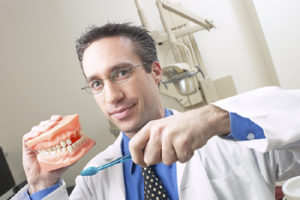Understanding Root canal Treatment

Endodontic or root canal treatment helps in relieving tooth pain and saving teeth. But root canal has always been associated with severe pain and many are scared when they hear that they need root canal treatment. Inflammation or infection that has gone right to the root of the teeth are removed and the whole teeth is preserved in this complex cure.
If saving the tooth is not possible then it has to be extracted. Tooth extraction brings with it issues such as shifting of remaining teeth, change in facial structure and so on. Root canal treatment preserves the teeth and ensures good oral health in a person.
Signs that show a need for a root canal treatment
Infection in the root of the tooth or the pulp of the tooth is what signals the need for root canal treatment. The pulp is the core area of the tooth that has nerve endings in it. This region gets infected and needs treatment. The pulp is protected by the outermost dental enamel and the inner layer of dentine. Since it is the core that is affected, even before the issue becomes severe, some symptoms signal towards the need for care.
One of the main symptoms is tooth ache. Severe tooth pain is felt in the tooth and neighbouring areas. Biting and chewing put extra pressure on the tooth and the pain increasing greatly. Accompanied with this pain is discolouration of the tooth. The tooth will change colour to a darker shade or can even turn black.
Gum sensitivity is also felt, this is because the infection affects the gum lining, and some even notice pimples forming on the gums. Prolong sensitivity of the teeth is also another symptom. When there is normal tooth sensitivity, a person would feel discomfort when consuming hot or cold food. This discomfort will disappear after some time. But when the root canal is infected, this tooth sensitivity stays for a longer period.
How does root canal treatment save the teeth?
This treatment is complex and will require one or more consultations with the dentist. The first step to this treatment will be doing an X-ray to understand the issue with the affected tooth. This will greatly help in planning the treatment procedures. This procedure is conducted under anaesthesia as it requires intricate dental procedures. The affected tooth is separated from other teeth by utilising tools. After the numbness has set in from the anaesthesia, the dentist will make an opening on the top of the crown of the teeth. Through this opening, by using specialised tools, the infected pulp is removed. A thorough cleaning of the area is also done to remove any infections that are sticking to the pulp cavity.
After cleaning the infected area, a rubber like material is filled into the pulp cavity. This will cover the entire area with no space left for bacterial action. The opening at the top of the tooth is then covered. Some dentists will place a temporary filling first then at a later time will complete the procedure. All these are done according to the dental health of a person. To make the procedure complete, an impression of the tooth is taken and a dental crown is placed to make the tooth look like a natural one. If the strength of the tooth to offer support to the restoration is not enough, then a post is placed inside the tooth for extra strength.
By understanding the above procedure, one can see how teeth are saved by this treatment. The infected portion is completely removed – this helps in cutting off any infection to the neighbouring teeth or gums. The tooth if left untreated will attract bacterial action, filling the pulp cavity and closing it off stops any future bacterial action. The infected tooth is not removed, but rather preserved by this treatment. The tooth is now able to perform its role to promote dental health. Not to forget the anaesthetic part, the dental crown fitting on top of the tooth is made with material that mimics the natural tooth. By this, the person who has undergone treatment does not feel awkward and no one is bound to know if the tooth is a restored one or not.
Caring after the procedure
This treatment is a complex procedure done under anaesthesia. Proper care needs to be taken for a few days right after surgery. Pain, discomfort and swelling will be felt right after the procedure. Dentists will provide medicine to relieve pain and reduce swelling. But that does not mean that one can continue following the earlier eating habits right after surgery. It is important to consume soft food right after the surgery, this will remove any extra pressure that is placed on teeth while consuming hard chewy food. The gums also will not be feeling any extra pressure on them. Reduced movement of the teeth will also help to reduce the pain and discomfort felt on the restored tooth.
It is best to avoid eating food right after the procedure as the effect of anaesthesia is still there. One can accidentally bite one’s cheek or tongue as there is numbness in the area. Reducing or stopping habits such as smoking or using tobacco goes a long way in maintaining oral health. Studies have shown that people who smoke have more chances of going for a root canal than non-smokers. The root canal procedure will also be affected adversely due to smoking or using tobacco.
Though brushing and flossing of teeth should be done as normal, it is important not to brush the restored tooth right after surgery. This can damage the tooth further. It is important that all concerns and doubts on what can be done, what are the main things that need to be taken care of after the procedure is discussed with the dentist to restore the regained oral health.
